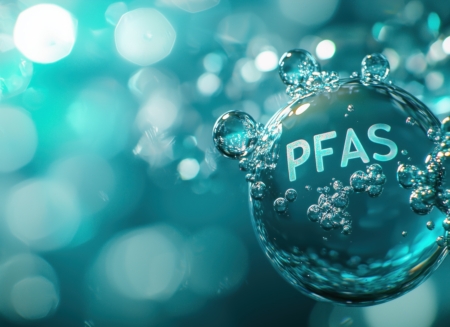This started as a blog on per- and poly-fluoroalkyl substances (PFAS), but not discussing the COVID-19 crisis would be akin to ignoring the proverbial elephant in the room. As we live through the current upheaval, we are reminded of our vulnerability. As a distraction, though, it can be interesting to think about connections between PFAS and COVID-19.
At first blush, comparisons seem inane. COVID-19 is an immediate, grave, and tangible threat to our health – we daily witness mounting incidence and death rates. In contrast, the actual health risks associated with PFAS remain uncertain. Though we have been exposed to PFAS for many years, and at much higher levels previously (as evidenced by declining levels in blood), we cannot reliably quantify risks and health effects associated with low part-per-trillion PFAS concentrations in drinking water.
One potential tie to PFAS and COVID-19 is our immune system. If, as some studies suggest, PFAS weakens our immune systems, our ability to fight off COVID-19 and other infectious diseases may be diminished. PFAS is, of course, only one of many factors that potentially affect immune system health.
Another commonality between PFAS and COVID-19 is the uncertainty and fear it engenders. Contracting COVID-19 symptoms can bring considerable anxiety with the knowledge that some cases progress to fatalities. Having an accumulation of PFAS in blood can also produce anxiety over potential health effects. The inability to know in the moment what the future holds can be unnerving. For COVID-19, resolution occurs over weeks, but for PFAS, the timeline of concern could be many years.
PFAS and COVID-19 are also reminders of our foundation on state autonomy. Though we often think of government in federal terms, states are making important decisions in responding to COVID-19, and in establishing standards and regulations for PFAS. Of course, states interact and are interdependent, necessitating federal involvement. At present, the balance of responsibilities is being tested by the need for short-term decision-making to respond to COVID-19 and by stated-led responses to PFAS concerns in the face of the deliberate federal process of establishing environmental laws and regulations.
A last observation on PFAS and COVID-19 relates communication and imperfect knowledge. As scientists/engineers, we have a responsibility to share knowledge within the arena of public debate, but simplistic messaging is tricky. When NASA scientist James Hansen told the U.S. Senate Energy Committee in 1988 that “the greenhouse effect has been detected, and it is changing our climate now”, he was sharply criticized by politicians, the press, and fellow scientists. Caveats on uncertainties must be acknowledged and communicated, but perhaps emphasizing the potential severity and consequences can be useful. For COVID-19, projections of high transmission and death rates led to decisions to social distance. For PFAS, protective standards are based on the tenet that it is better to be safe than sorry – even if considerable expenses are borne for little or no actual health benefit. In each case, the consequences of not acting will never be known, but working to protect public health is arguably beneficial even if predictions overestimate risk.
The hopeful return to focusing on PFAS will be welcome, though COVID-19 may change environmental priorities. For PFAS, there are important decisions evolving on to establish surface water criteria and soil standards for groundwater protection. States will once again lead these efforts. It will be interesting to see what new threats emerge in the future, and how our regulatory approaches adapt to address them.





